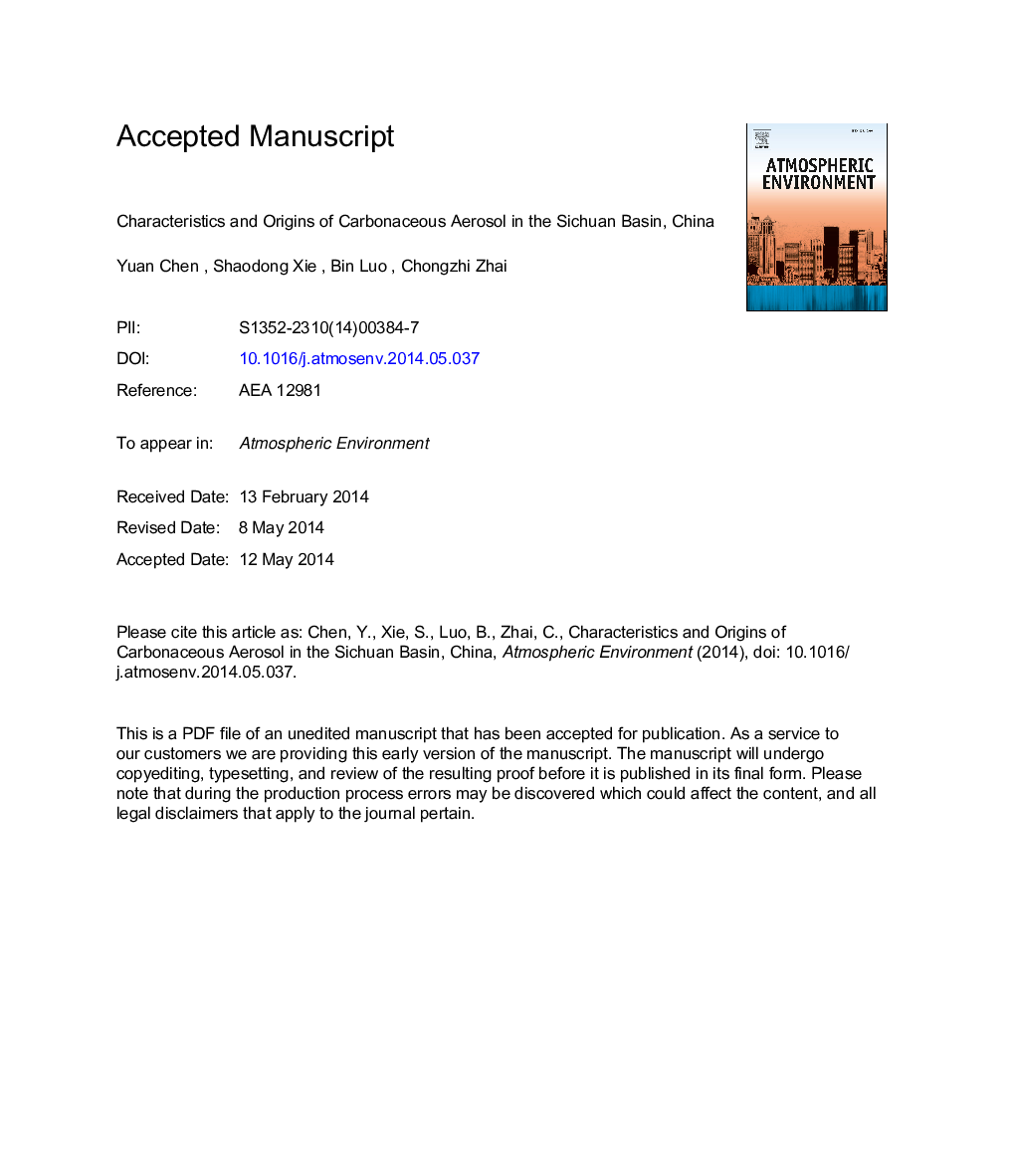| کد مقاله | کد نشریه | سال انتشار | مقاله انگلیسی | نسخه تمام متن |
|---|---|---|---|---|
| 6339560 | 1620377 | 2014 | 25 صفحه PDF | دانلود رایگان |
عنوان انگلیسی مقاله ISI
Characteristics and origins of carbonaceous aerosol in the Sichuan Basin, China
ترجمه فارسی عنوان
ویژگی ها و منشاء آئروسل کربن در حوضه سیچوان، چین
دانلود مقاله + سفارش ترجمه
دانلود مقاله ISI انگلیسی
رایگان برای ایرانیان
کلمات کلیدی
موضوعات مرتبط
مهندسی و علوم پایه
علوم زمین و سیارات
علم هواشناسی
چکیده انگلیسی
The Sichuan Basin is a low visibility area in southwest China, where the hilly and basin topography, plus humid and stagnant weather, lead to unique pollution patterns. To identify the characteristics and sources of carbonaceous aerosols, one-year record of 24-h PM2.5 samples were analyzed for organic carbon (OC) and elemental carbon (EC) content following the thermal/optical transmission protocol at three cities (Chengdu (CD), Neijiang (NJ), and Chongqing (CQ)) in the region during May 2012 to April 2013. The annual average concentrations were 19.0 ± 13.3 μg OC mâ3 and 4.6 ± 2.6 μg EC mâ3 in CD, 18.3 ± 8.4 μg OC mâ3 and 4.1 ± 1.8 μg EC mâ3 in NJ, and 15.2 ± 8.4 μg OC mâ3 and 4.0 ± 1.6 μg EC mâ3 in CQ, respectively. Organic matter (1.6OC) plus EC contributed about 40% of PM2.5 mass and displayed weak regional uniformity. Relatively high ratios of OC to EC were observed in the region with 4.3 for CD, 4.6 for NJ, and 3.8 for CQ, respectively. OC and EC pollution in the region exhibited interesting season-dependent characteristics with the lowest concentrations and OC/EC ratios in summer, but higher levels in other seasons. Higher OC/EC ratios in spring and autumn resulted from biomass burning, and in winter were from the enhanced secondary organic aerosol formation under favorable conditions. The exceptionally high OC and EC levels in May and October, mostly notable in CD, resulted from the burning of agricultural residues during harvest period. The high K+ concentrations and the high Kexcess/EC ratios implied the persistent influence of biomass burning throughout the year. Using a novel technique combing the EC tracer method and potassium mass balance in the aerosols, a K/EC ratio of 1.22 was used to retrieve the OC from biomass burning and the estimated contributions were 30.8%, 28.3%, and 21.9% in CD, NJ, and CQ, respectively, while secondary OC contributions to OC were 26.7%, 24.6%, and 25.7% in CD, NJ, and CQ, respectively.
ناشر
Database: Elsevier - ScienceDirect (ساینس دایرکت)
Journal: Atmospheric Environment - Volume 94, September 2014, Pages 215-223
Journal: Atmospheric Environment - Volume 94, September 2014, Pages 215-223
نویسندگان
Yuan Chen, Shaodong Xie, Bin Luo, Chongzhi Zhai,
